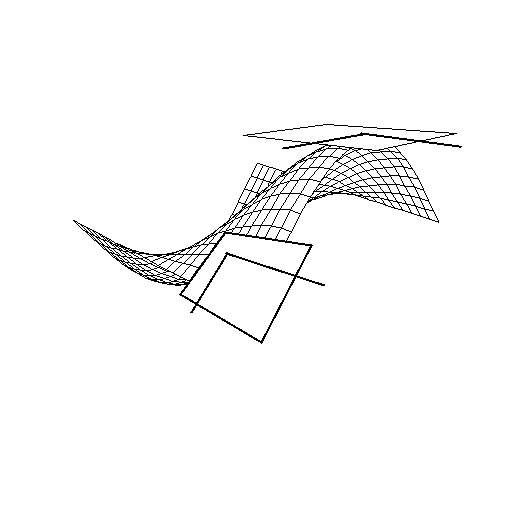Recall how the derivative in one variable calculus is used to approximate the function by finding a line that is tangent to the function at a point. This means that the slope of the line is the same as the slope of the function at that point. For a function of two (or more) variables, we need to create a tangent plane instead. This plane should have the same slope in the x direction and y directions as the derivative of the function in the x and y directions, respectively, at the point of tangency. Thus, if we use the basic formula z = mx + ny + d for the equation of a plane, then to make this plane tangent to the graph of f(x,y) at the point (x0,y0) we must take
![]()

We can then compute the remaining constant in the equation of the plane by using the fact that the plane must pass through the point (x0, y0, f(x0, y0)) in order for the surface and plane to be tangent.
For example, the function h(x,y) = x2 - y2 has partial derivatives of hx = 2x and hy = -2y. At the point (2,-3) we have hx = 4, hy = 6. The tangent plane should thus have m = 4, n = 6. We now compute d in the formula z = 4x + 6y + d by the knowledge that the plane contains the point (2,-3,h(2,-3)) = (2,-3,-5). Plugging this into the equation of the plane gives us d = 5 so that the equation of the plane that is tangent to h(x,y) =x2 - y2 at the point (2,-3) is
z = 4x + 6y + 5.
Another important idea is that of a normal vector. Later on, we will need to be able to compute the vector which is normal to a surface at a point. Since the tangent plane and surface touch at a point, the normal vector to the tangent plane is also normal to the surface. Thus, in the example above, if we rewrite the equation of the plane as
-4x - 6y + z - 5 = 0
we can see that the normal vector isAlthough these ideas seem rather contrived at the moment, in the next section we'll use the tangent plane for approximating functions and later on we'll use the normal vector when developing the idea of the flux integral.